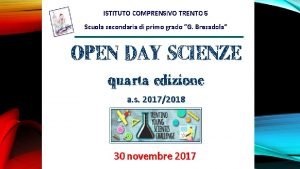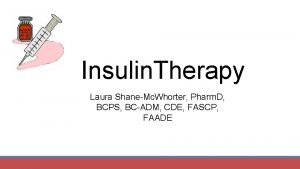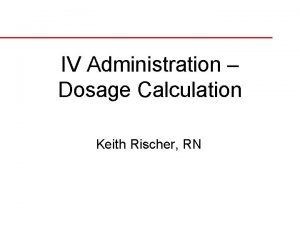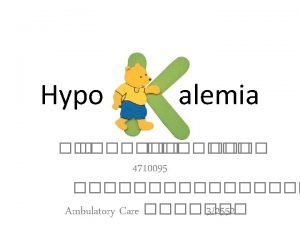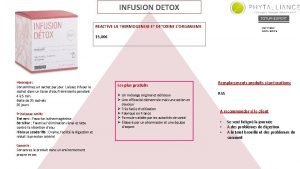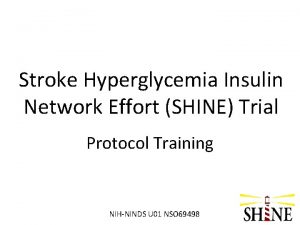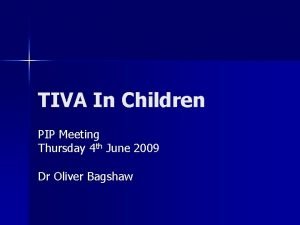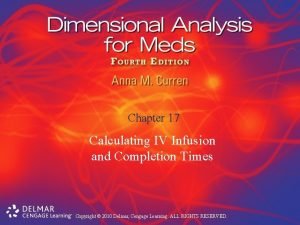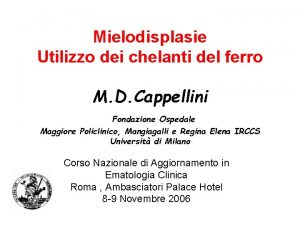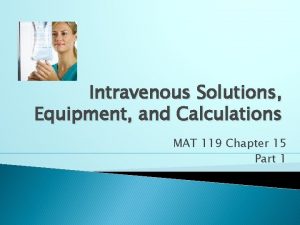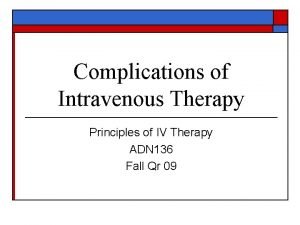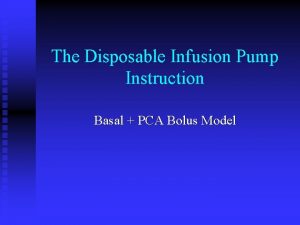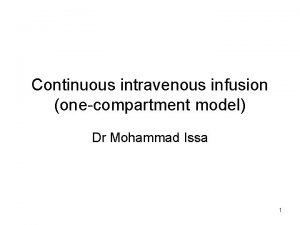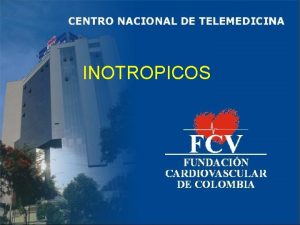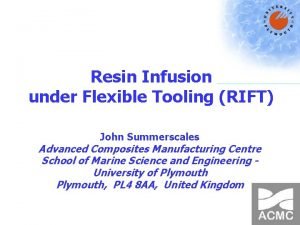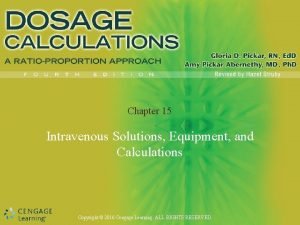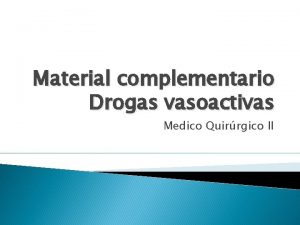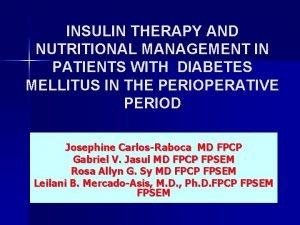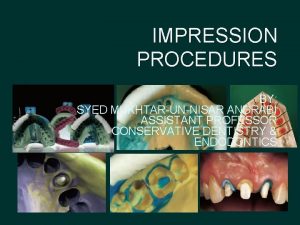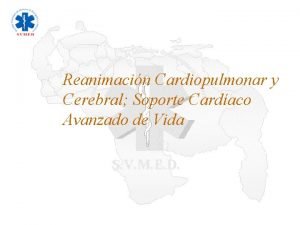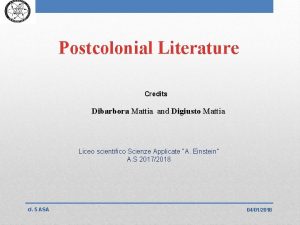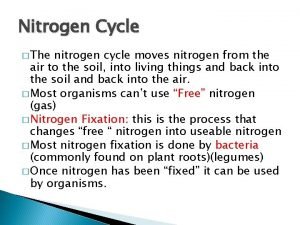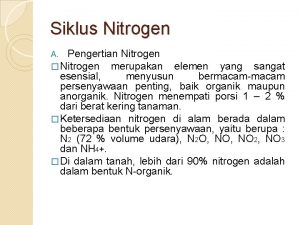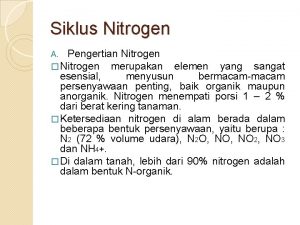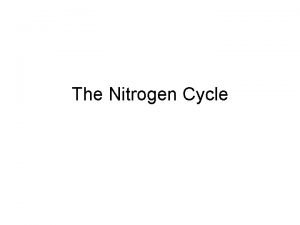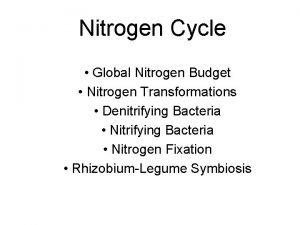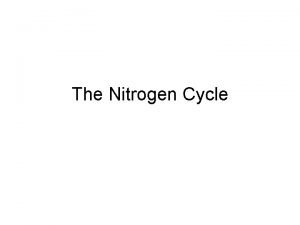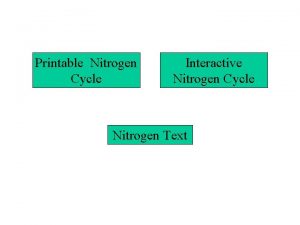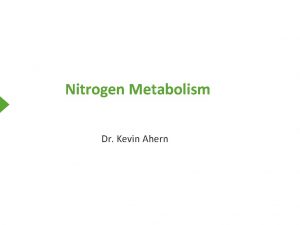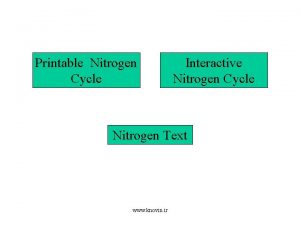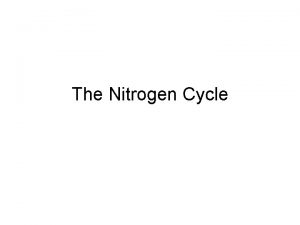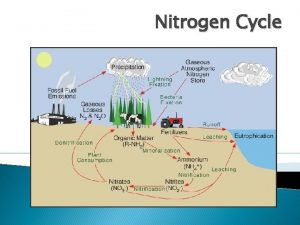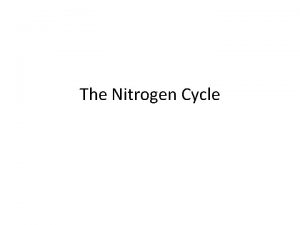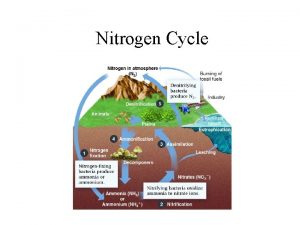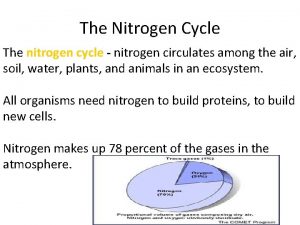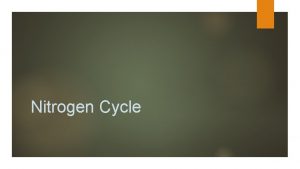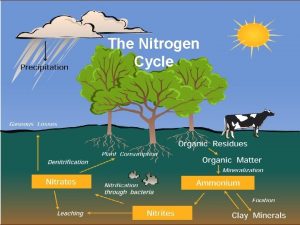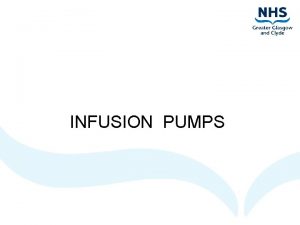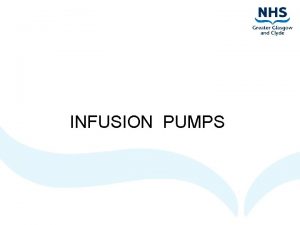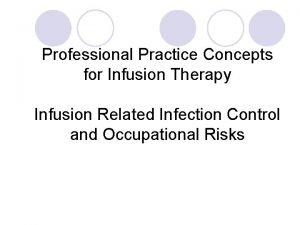New Insight on Nitrogen Infusion Mattia Checchin 8




































- Slides: 36

New Insight on Nitrogen Infusion Mattia Checchin 8 Feb 2018 TTC Workshop, Milan

Possible Routes to Cure the High Field Q-Slope 2 Mattia Checchin | TTC Workshop, Milan

Standard mild 120 C baking 3 h @ 800 C Fast EP HPR + VTS assembly 120 C baking in situ 120 C baking is done after oxidation of the RF surface HFQS is removed by: • Oxygen diffusion? • Vacancy formation? 3 Mattia Checchin | TTC Workshop, Milan

In furnace 120 C baking 3 h @ 800 C 48 h @ 120 C in furnace HFQS still there HPR VTS assembly In furnace 120 C baking is done on an oxide free surface HFQS is not removed: • The onset is moved to higher field • Is the absence of the oxide layer detrimental? A. Grassellino et al. , Supercond. Sci. Technol. 30, 094004 (2017) 4 Mattia Checchin | TTC Workshop, Milan

In furnace 120 C N-infusion 3 h @ 800 C 48 h @ 120 C with 25 m. Torr N 2 HPR VTS assembly 120 C N-infusion is done on an oxide free surface HFQS is removed: • Nitrogen is needed to remove the HFQS • High Q at high gradients A. Grassellino et al. , Supercond. Sci. Technol. 30, 094004 (2017) 5 Mattia Checchin | TTC Workshop, Milan

In summary 120 C baking alone is not enough to get rid of the HFQS. Either the oxide or nitrogen has to be present. The RF surface condition determines the route to get rid of the HFQS: • Surface with oxide: - Standard mild baking for 48 h @ 120 C • Oxide free surface: - N-infusion for 48 h @ 120 C with 25 m. Torr of N 2 6 Mattia Checchin | TTC Workshop, Milan

In summary 120 C baking alone is not enough to get rid of the HFQS. Either the oxide or nitrogen has to be present. The RF surface condition determines the route to get rid of the HFQS: • Surface with oxide: - Standard mild baking for 48 h @ 120 C • Oxide free surface: - N-infusion for 48 h @ 120 C with 25 m. Torr of N 2 7 Mattia Checchin | TTC Workshop, Milan

HF Rinsing Study: Depth-profiling of RF Performance 8 Mattia Checchin | TTC Workshop, Milan

HF rinse: depth-profiling of RF performance 1 HF 4 HF 6 HF 24 HF A. Romanenko et al. , Phys. Rev. ST – Accel. Beams 16, 012001 (2013) 9 Mattia Checchin | TTC Workshop, Milan

HF rinsing study – baseline curves Both cavities were 120 C N-infused 10 Mattia Checchin | TTC Workshop, Milan

HF rinsing study – 1 HF rinse 11 Mattia Checchin | TTC Workshop, Milan

HF rinsing study – 3 HF rinses 12 Mattia Checchin | TTC Workshop, Milan

HF rinsing study – 4 HF rinses 13 Mattia Checchin | TTC Workshop, Milan

HF rinsing study – 5 HF rinses 14 Mattia Checchin | TTC Workshop, Milan

HF rinsing study – 6 HF rinses 15 Mattia Checchin | TTC Workshop, Milan

HF rinsing study – 7 HF rinses 16 Mattia Checchin | TTC Workshop, Milan

HF rinsing study – 8 HF rinses 17 Mattia Checchin | TTC Workshop, Milan

HF rinsing study – 10 HF rinses 18 Mattia Checchin | TTC Workshop, Milan

HFQS reappearance onset vs material removal 19 Mattia Checchin | TTC Workshop, Milan

HFQS reappearance onset vs material removal No HFQS reappearance yet. Data represent Bp values of the quench. 20 Mattia Checchin | TTC Workshop, Milan

HFQS reappearance onset vs material removal 120 C N-infusion is affecting Nb deeper than standard 120 C baking 21 Mattia Checchin | TTC Workshop, Milan

Preliminary TOF-SIMS Studies on Cavity Cut-outs 22 Mattia Checchin | TTC Workshop, Milan

Cavities cutouts: TOF-SIMS studies Some cutouts of a 120 C N-infused cavity were studied with TOF-SIMS. 23 Mattia Checchin | TTC Workshop, Milan

Impurity profiles in cavity cutouts by TOF-SIMS Comparing EP cavity cutout with EP + 120 C 48 h N-infused cavity cutout Oxide Nitrogen diffuses within ~ 20 nm Relevant to HFQS depth Full details to be presented in A. Romanenko et al. , IPAC’ 2018 24 Presenter | Presentation Title 3/5/2021

Impurity profiles in cavity cutouts by TOF-SIMS Comparing EP cavity cutout with EP + 120 C 48 h N-infused cavity cutout Very deep oxygen and carbon diffusion tails of > 300 nm Not relevant to HFQS depth Full details to be presented in A. Romanenko et al. , IPAC’ 2018 25 Presenter | Presentation Title 3/5/2021

RF and TOF-SIMS data comparison N-infusion performance dictated by the nitrogen profile • Onset of HFQS in 120 C N-infused cavities in agreement with the diffusion profile of nitrogen • Oxygen and carbon are changing in a scale length not relevant for HFQS 26 Mattia Checchin | TTC Workshop, Milan

Impurity Layer Engineering: A Path to High Q at High Gradients 27 Mattia Checchin | TTC Workshop, Milan

Impurity profile: high gradients RF M. Checchin, Ph. D. Thesis (2016) M. Checchin, LINAC 2016 See also: T. Kubo, Supercond. Sci. Technol. 30, 023001 (2017) W. Ngampruetikorn, TTC FNAL (2017) 28 Mattia Checchin | TTC Workshop, Milan SC bulk

Impurity profile: high Q Example for a N-doped layer Cavity Q can be tuned by changing layer thickness: • Total surface resistance weighted over film and bulk • Optimal situation: High Q layers over a lower Q bulk T. Kubo, TTC Saclay (2016) T. Kubo, Supercond. Sci. Technol. 30, 023001 (2017) 29 Mattia Checchin | TTC Workshop, Milan

N-infusion: an example of impurity profile engineering Impurity profile at RF surface: → Enables high gradients + Doping elements: → Enables high Q-factors Nitrogen infusion: → Enables high Q-factors at high gradients → Important to investigate the optimal layer 30 Mattia Checchin | TTC Workshop, Milan

Conclusions 31 Mattia Checchin | TTC Workshop, Milan

Conclusions • The surface condition defines the strategy to cure HFQS: – Surface with oxide: standard 120 C baking for 48 h – Oxide free surface: 120 C N-infusion for 48 h • 120 C N-infusion is affecting Nb deeper than standard 120 C baking • N-infusion performance dictated by the nitrogen profile – Nitrogen enriched layer found in N-infused cavities – Carbon and oxygen profiles not compatible with the HFQS onset study • Engineering of the impurity profile: the key to high Q at high gradients in bulk Nb cavities 32 Mattia Checchin | TTC Workshop, Milan

Thanks for your attention 33 Mattia Checchin | TTC Workshop, Milan

Backup Slides 34 Mattia Checchin | TTC Workshop, Milan

120 C N-infusion on 9 -cells 35 Mattia Checchin | TTC Workshop, Milan

te 1 aes 015 history 36 Mattia Checchin | TTC Workshop, Milan
 120c tof
120c tof Mattia vitiello sapienza
Mattia vitiello sapienza Mattia fugazza
Mattia fugazza Il fu mattia pascal slide
Il fu mattia pascal slide Mattia leonardelli
Mattia leonardelli Mattia pavanello
Mattia pavanello Iaware infusion
Iaware infusion Continuous subcutaneous infusion
Continuous subcutaneous infusion Infusion specialization
Infusion specialization Formula for gtts/min
Formula for gtts/min Sufentanil infusion dose
Sufentanil infusion dose Hypokalemia mild moderate severe
Hypokalemia mild moderate severe Infusion therapy for arthritis
Infusion therapy for arthritis Nursing dosage calculations cheat sheet
Nursing dosage calculations cheat sheet Actrapid sliding scale
Actrapid sliding scale Iv infusion formula
Iv infusion formula Propofol infusion syndrome
Propofol infusion syndrome Calculating iv infusion rate
Calculating iv infusion rate Chelanti del ferro
Chelanti del ferro Gtts/min formula
Gtts/min formula Infusion hierarchy
Infusion hierarchy Iv occlusion signs
Iv occlusion signs Basal infusion
Basal infusion Iv infusion formula
Iv infusion formula What languages descended from latin
What languages descended from latin Hstix
Hstix Infusion curriculum integration
Infusion curriculum integration Dopamine drip formula
Dopamine drip formula Dopamina dosis infusion
Dopamina dosis infusion Vacuum resin infusion disadvantages
Vacuum resin infusion disadvantages How to calculate flow rate iv
How to calculate flow rate iv Noradrenalina dosis infusion
Noradrenalina dosis infusion Portland insulin protocol
Portland insulin protocol Dual arch impression technique
Dual arch impression technique Indicacion de bicarbonato en acidosis metabolica
Indicacion de bicarbonato en acidosis metabolica Extravasation
Extravasation Remifentanil infusion rate
Remifentanil infusion rate




